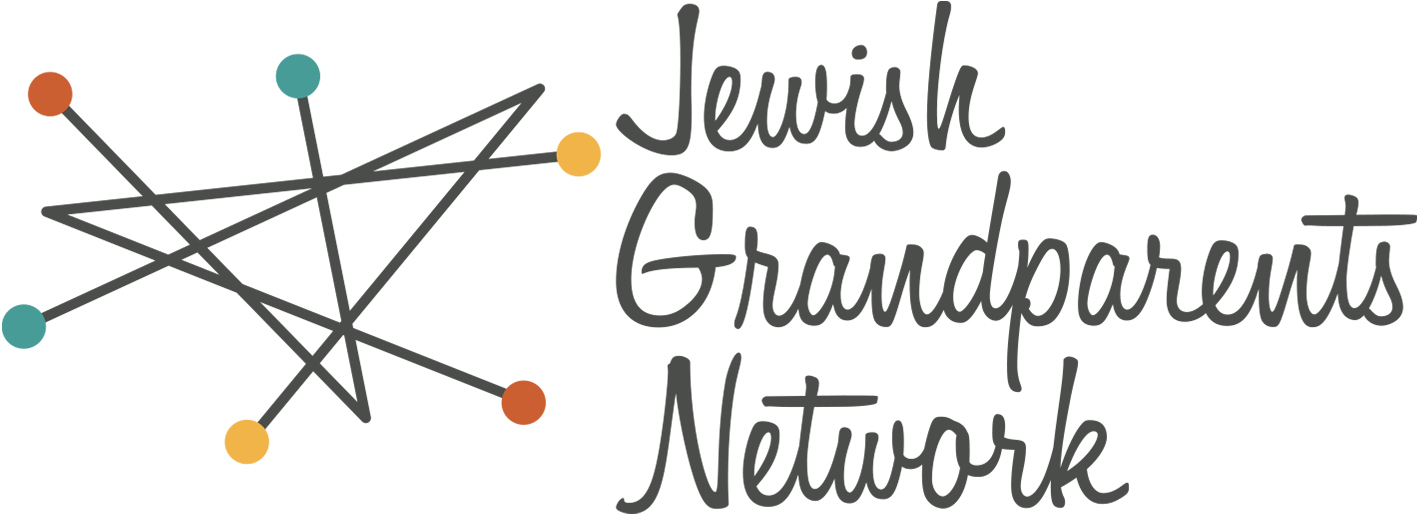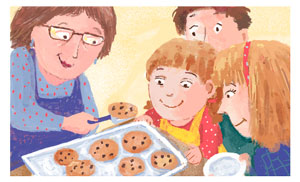
Mar 18 2023 Simple Ideas to Bring Passover to Life
Ages:
3-8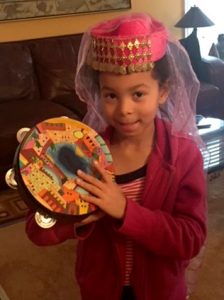
On Passover, we share the story of the Israelites journeying across the Sea of Reeds and into freedom through a multi-sensory celebration called the seder. We sing the songs in the Haggadah, taste the bitter herbs, and feel the matzah break apart in our hands to remind us of the Israelites’ experience. Participants of all ages can join in the interactive storytelling and traditional meal that reminds us of the evening before Moses led the Israelites out of Egypt.
Whether you participate in a seder or celebrate another time during the eight days of Passover, there are many ways for you and your family to bring the holiday to life together in person or at a distance.
![]() Click HERE to learn more about the Passover story.
Click HERE to learn more about the Passover story.
Here are ideas to spark your grandchild’s curiosity about Passover. Choose or modify the activities according to the age of your grandchild. Almost all of the activities can be adapted if you are at a distance on Zoom, FaceTime, or What’sApp.
![]()
![]()
![]()
![]()
![]()
At the seder, we can bring the Haggadah to life as we find new ways to explore the holiday rituals.
The Passover seder is a ritual meal consisting of multiple steps, typically hosted on the first and second nights of the holiday. At the seder table we read the Haggadah, a book that guides us through the rituals and recounts the exodus story.
![]()
![]()
![]()
![]()
![]()
Write your own family version of the Four Questions.
During the seder, we traditionally ask the Four Questions (Mah Nishtanah), exploring how this night is different from all other nights (for example, on this night we eat matzah). Think about this question: How are we different from all other families? Think about who your family members are, where you live, things you like to do, interesting family stories, and other family dynamics.


Together, create four answers to this question to share at the seder. You can also go around the seder table, with each person sharing their own answer to the question. Write or draw your answers together and paste this page inside the Haggadah your family uses. Each year, as your grandchild grows older, you can add new answers to the question.
Design a scavenger hunt to find the afikoman.
At the beginning of the seder, we hide a piece of matzah called the afikoman somewhere in the house. After the meal, children of all ages search for the afikoman and sometimes exchange it for a small prize (often all the kids get a reward). Create a visual afikoman scavenger hunt using pieces of paper with 5–7 numbered drawings that serve as clues (kitchen counter, bathtub, TV, bookshelf). You can print out pictures from the internet or cut them out of magazines or flyers. Participants might like to work in teams to find each new clue, ending with the treasure — the afikoman!
The Haggadah tells us to experience the Exodus “as if we ourselves went out of Egypt.”
We retell the story of Moses from his journey as a baby down the Nile River in a basket, to his triumphant leadership of the Israelites out of Pharaoh’s kingdom.
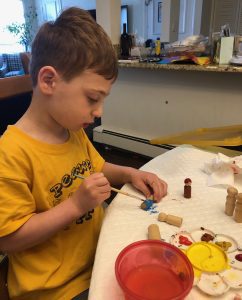

![]()
![]()
![]()
![]()
![]()
Create miniature Passover dioramas for the seder table.
Use simple household items to build small dioramas of key moments in the Passover story.
You and your grandchild can create the scenes on the Seder table as a centerpiece, or in small cardboard boxes that you bring to the table to display.
You can choose from the ideas below, or let your grandchild lead the way with their own creativity. You can create miniature scenes of:
- Moses in the River — Use a small bowl or basket and put a small doll inside. Use fabric or blue paper to be the water. You can use leaves or green paper to make the reeds.
- Moses at the Burning Bush — Crumple up an orange or yellow piece of paper and place a flashlight underneath (your smartphone flashlight will work). Put a small doll in front of the “fire” as Moses.
- Crossing the Red Sea of Reeds — Use blue paper or fabric to represent water on two sides of a path in the middle. Line up small dolls or action figures in a line in between the two sides of water.
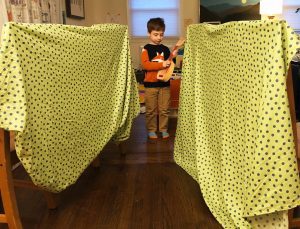

Have a dance party across the sea.
Create the parting of the Sea of Reeds in your dining room. Arrange chairs in two rows across from each other creating an alley, with the backs of the chairs facing in. Hang a bed sheet from each side to create a tunnel and imagine this as the parting of the Sea of Reeds.
Together with your grandchild, stand on one side of this alley. Make the sound of the whooshing water. Count to three, and slowly walk through the path, pretending you are crossing through a big sea. You can grab instruments or put on music as you dance your way across. If you play this activity during the seder, you can sing Dayenu on your feet, crossing through the sea.
On Passover, we think about what it means to be free, and how we can take care of others.
Use the activity below to connect to the themes of the holiday with your grandchild.
Raise your voices for freedom.
Explore the concept of freedom with your grandchild. For a younger child, talk about sharing, choice, and fairness to others. With older children, explore ways they have seen or experienced people advocating for their own rights or for the rights of others.
Together, create your own freedom campaign slogans inspired by Moses’s charge “Let my people go!” Write a slogan to advocate for the cause using a slogan that starts “Let…” For example, a younger child may design the phrase “Let us all play at the playground together!” or “Let everyone have a turn!” while older children may come up with “Let everyone have the right to make their own health decisions!

Practice saying your slogans with conviction. Together, design a poster to illustrate the slogan. You can present the campaign and poster at the seder and share why you chose this slogan.
Whether you create miniatures of the Passover story, dance your way through the Sea of Reeds, or design your own freedom sign, Passover can be a time for you and your grandchild to create together while experiencing ancient tradition in new ways. As you bring the seder to life either in person or through a screen, you can joyfully explore the rituals of Passover through discovery and creative play.
Jonathan Shmidt Chapman is the founder of The K’ilu Company, creating projects that activate Jewish early childhood education through theater and imaginative play. He is the creator of K’ilu Kits — interactive audio adventures that bring Jewish holiday stories to life — and Play-Along Parsha — a resource for 3-to-6-year-olds and their families to creatively engage with the weekly Torah portion. Jonathan was previously the Producer of Family Programming at Lincoln Center for the Performing Arts in New York.
Photographic Credits
Banner, miniature Passover diorama, dance party across the sea, and seder table centerpiece by Jonathan Shmidt Chapman
Child with tambourine by Gail Buchbinder
Child with afikoman by Terry Kaye



